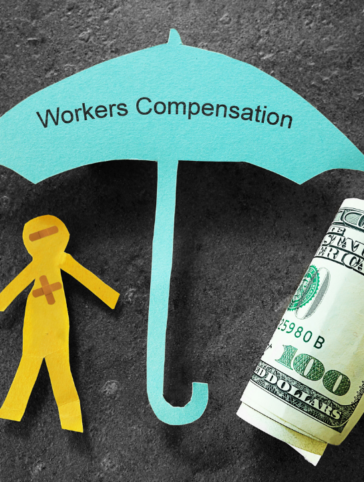
Feb 19, 2025
Emerging Workers’ Compensation RisksThere is a light at the end of the tunnel. The last two years have been difficult, especially for facilities that provide care for older adults. At the same time, considerable progress has been made. Although the pandemic is not over yet, personal assisted living facility leaders may find that the worst is behind them.
Personal assisted living centers have faced overwhelming challenges in their efforts to keep residents safe – in part due to the vulnerability of older residents and in part due to the close proximity of living conditions. COVID-19 can infect people of any age, but older adults typically experience the worst outcomes.
Age Group |
Risk of Hospitalization (Compared to 18-29 Age Group) |
Risk of Death(Compared to 18-29 Age Group) |
65-74 years old |
5X more likely |
65X more likely |
75-84 years old |
8X more likely |
140X more likely |
85+ years old |
10X more likely |
340X more likely
|
Source: Centers for Disease Control and Prevention
While the majority of personal assisted living centers survived these unprecedented conditions, some did not. In March 2021, about one year into the pandemic, King 5 News reported that approximately 1,600 long-term care facilities in the U.S. were expected to close as occupancy and revenue dropped.
With new variants emerging, the pandemic is not over. However, thanks to better treatments and prevention, the situation is improving.
Vaccine rollouts have arguably been the most important advancement in the fight against COVID-19. The Mayo Clinic says that 91.1% of people between the ages of 65 and 74 and 85.4% of people aged 75 or older are fully vaccinated. The Food and Drug Administration says that COVID patients also have more treatment options, including the antiviral drug remdesivir and several monoclonal antibody treatments. Rapid tests, masks, and other supplies can also help facilities manage outbreaks and protect residents.
The pandemic has made it difficult for vulnerable older adults to get the care and social interaction they need, but technology has eased these pandemic pains.
During the early days of the pandemic, Medicare expanded its coverage of telehealth services. Although these rules were created as temporary changes, there has been a push to make telehealth coverage permanent. In the meantime, many seniors have taken advantage of telehealth coverage to get care without risking exposure.
CMS says that there were 910,490 telemedicine users in the pre-pandemic period of March 1, 2019, to Feb. 29, 2020. That figure shot up to 28,255,180 in the period of March 1, 2020, to Feb. 28, 2021, accounting for 53% of all Medicare users.
Although the usage numbers have dropped off somewhat since the early pandemic heights, interest in telemedicine remains strong. This trend can help to lessen another health care trend that emerged during the pandemic: delayed care. According to the Harvard T.H. Chan School of Public Health, approximately 20% of U.S. adults say that they or their household members delayed care during the pandemic.
Technology has also helped older adults maintain connections with others. The National Academies of Sciences, Engineering and Medicine say that one-quarter of community-dwelling Americans aged 65 and older are socially isolated, and the Centers for Disease Control and Prevention says that social isolation is associated with a 50% increased risk of dementia and increases a person’s risk for premature death. The pandemic has increased social isolation and loneliness, but technology has helped many older adults connect with friends, family, and caregivers.
A study published in JMIR Aging surveyed older adults and found that 55.9% of respondents said that they had adopted new technology since the beginning of the pandemic and 56% said they used technology differently to connect with others. The study concluded that web-based socialization was the most promising way to mitigate the potential mental health effects related to COVID containment measures.
Regardless of what happens in the future, many older adults are now more tech-savvy than they were before the pandemic, and they can use their new skills to help navigate future challenges.
The worst of the pandemic may be behind us, but COVID probably won’t disappear entirely. New variants will likely emerge, and the virus may transform from a pandemic to an endemic. In other words, assisted living facilities must remain vigilant and prepared to manage the next variant.
Nevertheless, the industry has made significant progress in the last two years. Now is the time to stay the course. Personal assisted living facilities should make sure that their policies and procedures are in line with current best practices based on the knowledge that has been gained since the start of the pandemic.
Personal assisted living facility leaders should also review their insurance. The team at PCALIC can help. We have been providing insurance and risk solutions to the personal assisted living community for 20 years. Contact us to learn more.